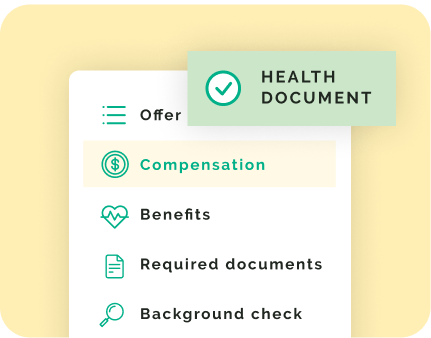In today’s competitive job market, finding the right talent for your organization is more important than ever. It’s essential to go beyond traditional hiring metrics and leverage targeted recruiting metrics to make informed hiring decisions and optimize your recruitment process. These metrics provide valuable insights into the effectiveness of your hiring efforts and help you identify areas for improvement. In this article, we will explore the power of targeted recruiting metrics and how they can revolutionize your hiring strategy.
Expanding Beyond Traditional Metrics
Traditional hiring metrics such as time-to-fill, cost-per-hire, and quality of hire are certainly important. However, they only scratch the surface when it comes to evaluating the effectiveness of your hiring strategy. To truly understand the impact of your recruitment efforts, it’s crucial to dig deeper and consider more insightful performance indicators.
Evaluating Candidate Quality from Different Sources
One key metric to consider is evaluating candidate quality from different sources. Not all candidates are created equal; some sourcing channels may yield higher-quality candidates than others. By tracking candidates’ performance and success rate from various sources, you can identify the most effective channels for attracting top talent. This allows you to allocate your resources and focus on the channels that deliver the best results.
Source-to-Close Metrics
Another important metric to consider is source-to-close metrics. This involves tracking the entire recruitment funnel, from the initial source of a candidate to the final hiring decision. By analyzing this data, you can gain insights into the effectiveness of each stage in the hiring process. You can identify bottlenecks, areas of improvement, and even potential biases in your recruitment workflow. This information empowers you to optimize your processes and make data-driven decisions.
Workflow Conversion Rates
Workflow conversion rates are an insightful metric that measures the effectiveness of each stage in your recruitment workflow. You can identify areas where candidates may drop off or encounter challenges by tracking the conversion rates from one stage to the next. This allows you to identify potential pain points in your hiring process and make improvements to ensure a smoother candidate journey.
Offer Acceptance Rate
Offer acceptance rate is a critical metric that measures the effectiveness of your job offers. It reflects how compelling your offers are to candidates and provides insights into your organization’s overall attractiveness as an employer. By monitoring your offer acceptance rate, you can gauge the competitiveness of your compensation and benefits packages, identify potential areas for improvement, and refine your offers to increase acceptance rates.
Gathering Feedback with Surveys and Net Promoter Scores
To gain a comprehensive understanding of your hiring process, gathering feedback from candidates is crucial. Surveys and net promoter scores (NPS) are powerful tools that can provide valuable insights into the candidate experience. By conducting surveys and using NPS, you can collect feedback on various aspects of your recruitment process, including application experience, interview process, and onboarding. This feedback allows you to identify areas of strength and weakness and make targeted improvements to enhance the overall candidate experience.
Leveraging Data Analytics for Continuous Improvement
In today’s data-driven world, leveraging data analytics is key to gaining valuable insights and continuously improving your hiring strategy. By analyzing recruitment data, you can identify trends, patterns, and areas of improvement, allowing you to refine your hiring approach and achieve better results. Here’s how you can leverage data analytics to enhance your hiring process:
Tracking Key Hiring Metrics
One of the first steps in leveraging data analytics is to track key hiring metrics. This involves monitoring and analyzing data related to various aspects of the recruitment process, such as the number of applicants, candidate conversion rates at each stage, time-to-hire, and the effectiveness of different sourcing channels. By tracking these metrics, you can comprehensively view your hiring process and identify areas that require attention or improvement.
Identifying Recruitment Bottlenecks
Data analytics enables you to identify bottlenecks in your recruitment process. By analyzing the time taken at each stage of the hiring process, you can pinpoint areas where delays occur, or candidates are getting stuck. This information allows you to take corrective action, streamline your workflows, and improve the overall efficiency of your hiring process. For example, if you notice a significant drop-off in candidate interest after a particular stage, you can focus on optimizing that stage to minimize candidate attrition.
Predictive Analytics for Better Decision-making
Predictive analytics is a powerful tool that uses historical data to predict future outcomes. By leveraging predictive analytics in your hiring process, you can make better decisions when it comes to candidate selection, identifying high-potential candidates, and predicting future talent needs. This helps you align your recruitment efforts with your organization’s long-term goals and make proactive hiring decisions.
The Role of Continuous Evaluation and Adaptation
An effective hiring strategy is not static but requires continuous evaluation and adaptation. By regularly reviewing and assessing your recruitment efforts, you can identify what works and what needs improvement, enabling you to refine your approach over time. Here are some key aspects to consider when it comes to continuous evaluation and adaptation:
Gathering Feedback from Hiring Managers and Candidates
Feedback from hiring managers and candidates provides valuable insights into the strengths and weaknesses of your hiring strategy. By soliciting feedback, you can identify pain points, areas for improvement, and opportunities to enhance the candidate experience. This feedback can be collected through surveys, interviews, or even informal conversations, and it should be used to drive continuous improvement in your recruitment process.
Staying Agile and Adaptable
The business landscape is constantly evolving, and so are your organization’s needs. To stay ahead, it’s important to be agile and adaptable in your hiring strategy. This involves monitoring industry trends, staying informed about new recruitment technologies and practices, and proactively adjusting your approach to align with the changing needs of your organization and the job market.
How Chattr Streamlines Your Hiring Process
In today’s digital age, leveraging technology is essential for optimizing your hiring process. Chattr is an innovative platform that streamlines and simplifies the hiring process, making it more efficient and effective. With Chattr, you can automate various stages of recruitment, from candidate sourcing and screening to interview scheduling and onboarding.
The platform utilizes artificial intelligence to match candidates with job requirements, saving you time and effort in the selection process. Chattr also provides advanced analytics and reporting features, allowing you to track key recruiting metrics and measure the success of your hiring strategy. By leveraging Chattr, you can streamline your hiring process, improve candidate quality, and make data-driven decisions to optimize your recruitment efforts.
In conclusion, targeted recruiting metrics are powerful tools that can transform your hiring strategy. By expanding beyond traditional metrics and embracing more insightful performance indicators, you can gain a deeper understanding of your recruitment process, identify areas for improvement, and make data-driven decisions. Furthermore, surveys and net promoter scores allow you to gather valuable candidate feedback and enhance the overall candidate experience. Finally, leveraging innovative platforms like Chattr can streamline your hiring process and achieve greater efficiency and effectiveness. Embrace the power of targeted recruiting metrics and take your hiring strategy to new heights.















